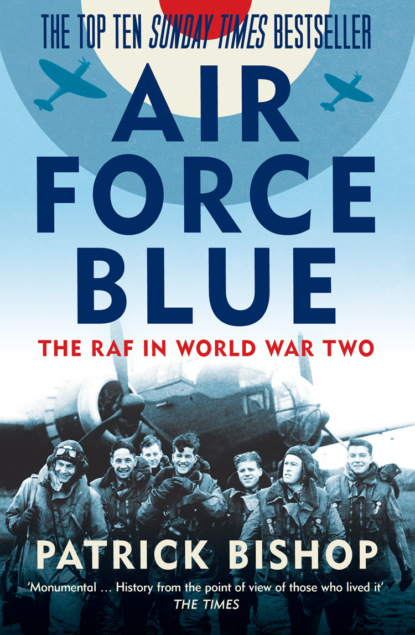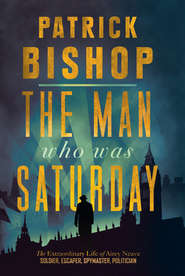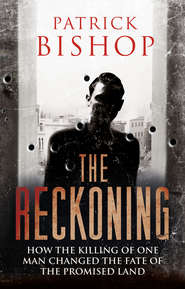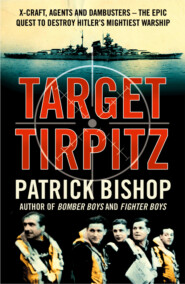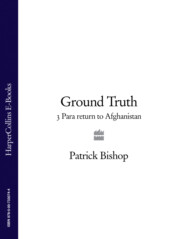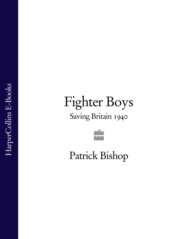По всем вопросам обращайтесь на: info@litportal.ru
(©) 2003-2024.
✖
Air Force Blue: The RAF in World War Two – Spearhead of Victory
Настройки чтения
Размер шрифта
Высота строк
Поля
The RAF Volunteer Reserve (RAFVR) hastened the transformation of the Air Force from a tiny elite dominated by the comfortably off and privately educated into a mass organization drawn from every level of Britain’s sharply stratified society.
From the outset it was presented as a democratic endeavour. ‘The social and political setting of the time had considerable influence on [the] proposed scheme and there was strong popular feeling against any “caste” or “old school tie” attitude’, the RAF internal narrative recorded.6 (#litres_trial_promo) It was ‘visualized as a collection of young men drawn from the middle class in its widest sense and with no suggestion in its organization of a pre-determined social hierarchy’. In time it would be hailed as a great RAF innovation but the credit for the initial concept belongs as much to the imagination of an Air Ministry bureaucrat as it does to the progressive instincts of the Air Staff.
W. L. Scott was working for Air Commodore Arthur Tedder in the Air Ministry’s training department when he was set the problem of finding pilot material from new sources. He had won a DSC with the Navy during the previous war and went on to be knighted for his labours in the Civil Service. Despite his conventional background, he seems to have had a sympathetic understanding of the contemporary mood. He realized that to get the numbers it needed the Air Force would have to reach beyond the social groups it felt comfortable with and embrace the young men growing up on the suburban streets of modern Britain.
Britain in the 1930s was changing shape. Towns that had not altered for centuries were being transformed by giant cinemas and blocks of flats. The surrounding fields filled up with new housing, arranged in ‘crescents’, ‘avenues’ and ‘drives’ lined with mock-Tudor houses. The people who lived in them often also owned them. They worked in modern jobs in offices and factories and when they wanted fun looked to America to entertain them. They watched American films at the Odeon and danced to American music at the local Palais, which they drove to in small cars mass-produced by Morris and Austin. They had little reason to regret the passing of old Britain. They were interested in the future, and determined to have a place in it, and not on terms of deference or inferiority.
It was to this generation that the RAF now turned, but with some caution.7 (#litres_trial_promo) Scott’s initial memo warned that the sort of men they were looking for were unlikely to take kindly to strict military discipline. Instead, ‘the desire to fly, patriotism, and retaining fees large enough to count in a young man’s weekly budget will be the means of attracting our reservists’. In addition, he proposed, it was important that the whole experience was fun. ‘Socially the reserves must be a great success,’ he wrote. ‘The young men must enjoy their evening meetings and their weekends.’8 (#litres_trial_promo)
This concept was a major departure from conventional military structures and a lot for the Air Staff to swallow. Its members had spent their lives inside an institutional cocoon where they kept company with each other and followed traditional leisure pursuits: riding, shooting, fishing and sailing by day, dining and playing bridge together by night. They knew those below them on the social scale only as servants or other ranks. They were unfamiliar with the new world emerging beyond the gates of the base and were not sure how much they liked it. To them the growth of mass consumerism was an affront in a time of crisis. ‘If even a fraction of the energy, material and organizing capacity now being diverted to such non-essential channels as the production of unnecessary motor-cars, luxury cinemas and blocks of flats were directed … to the production of modern aircraft, we could overcome our present dangerous difficulties …’ complained an Air Staff paper in November 1937.9 (#litres_trial_promo)
Nonetheless, after a few initial queries, the Director of Training Arthur Tedder backed the scheme. Tedder came from a conventional establishment background. He was the son of a senior civil servant, went to Whitgift School, then Magdalene College, Cambridge, where he studied history. He entered the Colonial Service but volunteered for the Army when war broke out. An accident resulted in a serious knee injury which seemed likely to keep him out of the fighting. Desperate to escape the tedium and ignominy of a cushy rear echelon job, Tedder harassed the authorities until he was finally accepted for pilot training with the RFC. In the summer of 1916, while the Somme offensive was raging, he was a flight commander with 25 Squadron which was carrying out constant bombing raids and reconnaissance missions and suffering heavy losses. On 17 July they were inspected by the RFC commander Hugh Trenchard, whose policy of all-out aggression was driving the high casualty rate. In a letter to his wife Rosalinde, Tedder reported that he ‘had to go round with him while he looked at our machines. He asked a lot of questions, but made absolutely no comments, except “Yes.”’10 (#litres_trial_promo) Trenchard had seen something he liked in the twenty-six-year-old officer. He would ‘foster many careers during the next 30 years’ among the men who served under him on the Western Front, wrote his biographer, Vincent Orange, but ‘none more so than Tedder’s’.11 (#litres_trial_promo)
With Tedder’s support the basic format was adopted. Putting the scheme to the Treasury, the Air Council proposed ‘to open the new force to the whole middle class in the widest sense of that term, namely the complete range of the output of the public and secondary schools’.12 (#litres_trial_promo) Until now, anyone seeking entry to the RAF would have been initially graded as to whether or not they were officer material primarily on the grounds of their social class. In the new circumstances this was considered ‘inappropriate’. Instead entry was to be ‘on a common footing, airman pilot or observer and promotions to commissioned rank will be made at a later stage in accordance with the abilities actually displayed’.
It amounted to a near-revolutionary challenge to the assumptions that governed the closed world of the British military. In the previous war, death and injury had cleared a path for lower-class men to receive the King’s commission. In peacetime the old barriers were quickly re-erected. In principle at least, the RAFVR established a new universal criterion for officer selection: it meant that candidates would be chosen, not on the grounds of which school they went to and which accent they spoke with, but on the basis of whether they were any good or not.
Expansion also created a need for more short service officers. To attract the numbers needed, advertising campaigns were mounted and standards relaxed. The results were unwelcome to some career officers who preferred the old exclusivity.
The gentleman fliers of the Auxiliary Air Force had been similarly dismayed by the creation of the RAFVR which opened the club doors of weekend service aviation to Tom, Dick and Harry. All AAF Squadrons were exclusive to a certain extent, some ludicrously so. Outfits such as 601 (County of London) were founded in 1926 by Lord Edward Grosvenor who recruited the first members from the White’s club bar. Originally the Auxiliaries were all bomber squadrons and in the words of the RAF narrative ‘truth to tell, not very highly rated as such’.13 (#litres_trial_promo) However ‘they had no inferiority complex: very much the opposite in fact. Indeed, some of the squadrons were inclined to look down on the regulars, as the cavalry in the army used to look down on the infantry.’
When planning for the RAFVR began it seemed that the AAF provided a natural nucleus around which to build an organization to train the newcomers. It resisted all pressure to do so, being ‘reluctant to sacrifice its exclusive character to serve wider interests’ as its ‘standard of expenditure and social rigidity were incompatible with a democratic reserve’.14 (#litres_trial_promo) Frederick Bowhill, the Air Council member responsible for personnel, thought the Auxiliaries might be open to recruiting a reserve of accountant and stores officers ‘who might have been thought socially acceptable’. Instead opposition ‘was so violent that the suggestion was hastily dropped’.15 (#litres_trial_promo)
Some AAF members and some regular officers saw themselves as the paradigm of the upper-class warrior, bold and courageous but taciturn and emotionally restrained. These types populate the quasi-autobiographical stories of John Llewellyn Rhys, son of a Welsh rector who, after public school, in the early 1930s gave up a place at Oxford to join the RAF. He combined a love of flying with literary ambitions and began publishing short stories in 1936. In one, ‘Too Young to Live’, the narrator is in hospital recovering from an unspecified injury. In the neighbouring bed is a young pilot, dying slowly from the effects of a crash after only his second solo flight.
That afternoon he began to talk to me again, telling me about his people, who were in India, and how they hated him flying and how his mother had prophesied that his career as a pilot would end in disaster … it seemed they had a place in England, a house in Suffolk in the lovely wooded country on the Norfolk border. There was a lot of game there and he wanted me to promise to come up for some shooting … ‘The riding’s grand too; you could have Magpie, and there’s bags of hunting and we’d go into market on Wednesday and drink with the farmers …’16 (#litres_trial_promo)
England Is My Village, which appeared in 1940, describes the atmosphere in the officers’ mess as the Wing Commander briefs his men on the eve of a big operation.
Robert heard his instructions and memorized them with an ease born of practice, but the words seemed meaningless, rattling like hail on the roof of his mind.
‘Any questions?’
But they were all old hands and no naïve youngsters among them wanted to make themselves heard.
‘Well … good luck! I know you’ll put up a good show,’ his voice was suddenly shy, ‘I wish they’d let me come with you.’
They went back to the ante-room, went on talking, reading … Robert sat down by a friend. They had been together for years but were in different squadrons.
‘If anything,’ Robert’s voice was quiet as he flipped the pages of a magazine, ‘if anything were to happen to … slip up … tomorrow, would you attend to the odd detail?’
‘Of course, old boy.’ The other puffed his pipe alight, swung the match until it was extinguished.
‘Tomorrow?’
‘Yes.’
‘Tough show?’
‘Tough enough.’17 (#litres_trial_promo)
Robert does not return from the op. Rhys, a flight lieutenant in a bomber squadron, was killed on active service in August 1940.
This portrayal of an Air Force staffed by strong, silent men from good county families was more an expression of how some airmen liked to see themselves rather than a reflection of reality. The illusion was unsustainable. The social distinctions that marked the pre-war RAF soon became blurred when the fighting began. As the first clashes thinned their ranks and veterans were posted away, the AAF squadrons could no longer maintain their exclusivity and had to accept whoever they were sent as replacements. By the end of the Battle of Britain only five pilots remained from 601’s pre-war strength. The sixty-one men who washed through the squadron in the months of the Battle made up what was by then a typical Fighter Command motley of RAFVR sergeants, former SSC pilots and Czech and Polish airmen rejoining the fight.18 (#litres_trial_promo)
Even so, some important aspects of the pre-war style survived to become embedded in the Air Force ethos and form a salient part of its image. British airmen, whatever their origins, disliked show-offs and insouciance and understatement were the form. Air Ministry officials who during the war organized morale-boosting visits by veterans to aviation factories had to urge them to speak vividly about their experiences. An official account noted that ‘the reluctance of the aircrew personnel to “shoot a line” as they called it, had to be overcome’.19 (#litres_trial_promo) Above all, pre-war professionals, auxiliary amateurs and the citizen fliers of the wartime service were united in an all-but-unquestioned willingness to face any odds and accept any risk.
Scott and Tedder identified the desire to fly as the most powerful inducement in attracting aircrew candidates. Nowadays it is quite hard to appreciate the fascination with aviation that gripped young men – and women – growing up in the 1920s and 1930s. The jeremiads preached by politicians about the huge potential for evil created by the invention of the aeroplane had little effect on the young. In their minds, it was the magic of flying that prevailed.
In the 1920s and 1930s aviators, male and female, enjoyed the celebrity and sometimes the rewards of film idols. The British couple Amy Johnson and Jim Mollison were world-famous. Amy was small, dark and gamine and looked as good in the severe fashions of the day as she did in leather helmet and sheepskin flying jacket – a paradigm of modern womanhood. She was born in Hull in 1903, where her father was a prosperous businessman, and studied economics at Sheffield University only to end up as a secretary in a solicitor’s office in London.
She found her métier when she joined the London Aeroplane Club, gaining a ground engineer’s as well as a pilot’s licence. Backed by her father and wealthy air enthusiasts she made a record-breaking solo flight to Australia in 1930 inspiring a popular hit, ‘Amy, Wonderful Amy’. In 1932 she met and immediately married Mollison, a Glasgow-born flier and former RAF short service commission officer and instructor at the Central Flying School. They competed as a team in air races and were fêted as ‘the Flying Sweethearts’. The marriage crumbled after four years, due it was said to Mollison’s drinking and inability to cope with his wife’s fame. When the war came she joined the RAF as an Air Transport Auxiliary pilot delivering service aircraft around the country and died in mysterious circumstances after baling out from an Airspeed Oxford over the Thames Estuary in January 1941.
Aviation attracted the wealthy, fashionable and aristocratic but it was also promoted as a marvel of the new democratic age that should be open to everyone. No one pushed this message harder than Alan Cobham. Even in an industry not lacking energetic egotists, Cobham stood out. He flew with the RFC in the First World War, then joined de Havilland as a test pilot before making a series of flights to Australia and around Africa for which he was knighted by King George V. He played himself – the starring role – in a 1927 silent movie, The War Commander. In 1929 he set out on an air tour of Britain to encourage a trade-boosting programme of municipal airport building under the slogan ‘Make the Skyways Britain’s Highways’. His great achievement, though, was to get a generation of British boys and girls airborne. Cobham believed that ‘air-mindedness’ was best started early. The airliner he flew around the country was called ‘Youth of Britain’ and on the first tour of Britain the Castrol oil magnate Lord Wakefield paid anonymously for 10,000 children to get a first taste of ‘going up’ in it.
His proselytizing drive, as well as a keen business instinct, led him to dream up an event which he hoped would ‘embed itself in the public consciousness as deeply as Pancake Tuesday or Fireworks Night’, by persuading hundreds of towns around the country to host their own National Aviation Day.20 (#litres_trial_promo) Cobham provided the spectacle with a team of ‘aces’, dashingly kitted out in white flying overalls manning up to fourteen aircraft. They laid on exhilarating displays, putting the aircraft through rolls, inverted loops, and ‘falling leaf’ manoeuvres as well as clambering out of the cockpits for displays of wing-walking. In 1933 they visited 306 venues in the British Isles and 800,000 people paid to see them. Ticket prices were low – 1s. 3d. for an adult and 6d. for a child – but, to Cobham’s exasperation, many others watched for free from what he called the ‘Aberdeen Grandstand’ – neighbouring high ground.21 (#litres_trial_promo)
Part of the huge appeal of Cobham’s Flying Circus was the chance for punters to get airborne and about one in four of those who attended did so. This could be done sedately, in a multi-seat airliner or, more thrillingly, in the rear cockpit of one of the smaller planes. The tickets were priced for a wide range of pockets: a pound for a white-knuckle full aerobatic flight (about £60 today), 10s. for a seat in the opening Grand Formation Flight or 4s. for a four-minute flip.
For thousands of the young men who flew with the Royal Air Force in the Second World War, this was their initiation to the air and for many it was as powerful and unforgettable as a first sexual encounter. Charles Fenwick, son of a captain in the Royal Engineers, was in his early teens when Cobham’s circus came to Rough Common just outside Canterbury. His aunt Edie took him to watch the show. Fenwick had never seen an aeroplane before. What followed was a coup de foudre. ‘Soon after we arrived the first plane taxied out and flew off into the lovely clear morning sky,’ he recalled, ‘and sitting behind the pilot was a young boy.’22 (#litres_trial_promo)
Fenwick was ‘green with envy’. Then Edie offered to treat him to a ‘flip’ and a few minutes later he was climbing into the rear cockpit of an elderly Avro 504. He had barely time to strap himself in ‘before we were rumbling across the field. After a final frenzied race across the meadow the rumbling suddenly stopped and my heart followed suit as I left the earth for the first time.’ Many years after the event he wrote: ‘the thrill as we climbed up and away from the solid old Earth will never fade. I was dumbfounded … we sailed over Hall Place and peered down into the rookery as the inmates squawked their way to safety … there was our home, the Claverings, looking for all the world like a doll’s house. On, on we flew. This was utterly stupendous …’ When he left school Fenwick went to the aircraft manufacturer Short Brothers as an apprentice, joined the Volunteer Reserve six months before the outbreak of war and flew Hurricanes in the Battle of Britain.
Boys who were not lucky enough to take a joy ride could fantasize about flying, their imaginations stimulated by a vast range of juvenile literature featuring aeroplanes and aviators. Lively mass circulation comics like Modern Boy were full of now-forgotten flying adventurers such as Jaggers of the RAF and Scotty of the Secret Squadron. The greatest of them all was James Bigglesworth. Biggles was the creation of W. E. Johns who had a brief but dramatic career as a bomber pilot with the RFC on the Western Front. Shot down in the last weeks of the war, he was captured but managed, briefly, to escape. He stayed on in the post-war RAF as a recruitment officer. On leaving he turned to editing, writing and illustrating on aviation themes. In 1928 he became editor of Popular Flying where Biggles appeared in the first of many short stories. In September 1932 a collection appeared called The Camels Are Coming. It was the start of a literary phenomenon. Johns was prolific and Biggles books flowed from his pen sometimes at the rate of four a year.
The characters were reasonably close to life and the detail and plots rang true. The young readers were not spared the realities of air fighting including the prospect of a ghastly death burning alive in a slow descent. But against this was set the camaraderie and gaiety of squadron life and the compelling figure of Biggles himself. Cool, technically competent and skilful yet understated, full of pluck and vitality, he was a hero made for his time.
Before long he would have a female counterpart. In 1941 Johns followed up with the first in the ‘Worrals’ series featuring the adventures of Joan Worralson of the Women’s Auxiliary Air Force and her sidekick Betty ‘Frecks’ Lovell. Johns revealed that the character was based on two women fliers of his acquaintance, Amy Johnson and Pauline Gower. As well as setting up her own joy-riding and air taxi service in Kent, Gower wrote stories with air themes for the Girl’s Own Paper. She would go on to head the Air Transport Auxiliary during the war.
The Air Ministry exploited the glamour of aviation to burnish the RAF’s reputation and appeal. The annual Hendon Air Display and the Empire Air Days put on at RAF stations around the country from 1934 to 1939 emphasized the excitement of flying rather than the realities of aerial warfare with spectacular demonstrations of stunt and formation flying. Sometimes they included mock imperial policing operations in which aircraft dropped flour bombs on villages inhabited by rebellious ‘Whatnot’ tribesmen or on fake wooden battleships. The main purpose, though, was to impress and entertain.
In official publications the RAF naturally emphasized its defensive and deterrent role. The bomber force was designed for a counter-offensive not to launch aggressive war. This was a British version of air power framed by national characteristics of restraint and reserve, with rearmament presented, reasonably enough, as a reluctant necessity. A pre-war recruiting poster showed a young family picnicking on the cliffs on a sun-drenched summer day. Father and son are looking upwards at a flight of twin-engine bombers heading out to sea while mother and daughter prepare tea. The copy reads ‘Air Defence is Home Defence’.23 (#litres_trial_promo)
When it came to attracting the specialist ground tradesmen needed to service the expanded squadrons, the RAF used a different approach, which ignored the prospect of war and made no appeal to duty and patriotism. The competition for skilled men was fierce, and there were plenty of well-paid jobs available in war industry factories. Advertising campaigns played up the prospect of travel and adventure and the attractions of outdoor life over a dreary works in the Midlands. A poster that appeared in 1939 showed a smart, confident figure in side cap and overalls, probing efficiently at an aero engine above the exhortation: ‘Come on, skilled fitters! Your experience will earn you the finest job ever: and with it – security, good prospects and a grand outdoor life.’24 (#litres_trial_promo)
The inducements on offer were strong even in supposedly prosperous parts of the country. Len Hayden was brought up in Henham-on-the-Hill in Essex, one of nine children who lived in a three-bedroom house without running water. He left school at fourteen and did a series of menial jobs in local haulage and engineering companies which offered little pay and no security but where he picked up a knowledge of mechanics. One winter morning early in 1939 he arrived at work after pushing his bike for eight miles through thick snow only to be sent home for turning up late.25 (#litres_trial_promo)
It was then that he made up his mind to respond to a newspaper advert seeking air mechanics for the RAF. He decided against telling his parents. His father Billy had been a reasonably prosperous coal merchant and dairy farmer before the previous war. He volunteered for the Army in 1916 and served in the trenches where he was poisoned by mustard gas. His health, and his prosperity, never returned. ‘Time after time he would return home [from hospital treatment] and try and rebuild his business, each time only to succumb to bouts of pneumonia and pleurisy caused by his wartime service,’ Hayden remembered.26 (#litres_trial_promo) He scraped a living as a middleman buying cattle for local farmers and a 19s. 6d. weekly pension, squeezed out of the War Office after the intervention of the local MP. His son reflected that it was ‘no wonder tears trickled down his cheeks’ when he called home late in 1940 to say goodbye before following his squadron to North Africa. ‘He must have been thinking how a grateful nation would treat us when we returned from “our” war.’
The recruiting campaigns were almost too successful. In March 1939 Charles Portal, then in charge of personnel at the Air Ministry, reported that there was a shortfall of fitters, wireless and electrical mechanics, instrument makers and armourers. However, he concluded, ‘basically the problem is not volunteers but the facilities in which to train them’.27 (#litres_trial_promo) The inability of the training machine at every level to keep pace with the increase in men and machines would contribute much to the RAF’s multiple failures in the opening stages of the war.
Like their Army and Navy counterparts the men who ran the RAF regarded their service as a manifestation of British identity and a repository of British virtues. They were wary of outside attempts to portray it, no matter how great the resulting publicity might be. In July 1937 the weekly meeting of the Air Council which brought together the Air Minister Lord Swinton, his deputy and the top staff officers discussed a Hollywood proposal to make a movie with an RAF theme. British settings were popular with American audiences and Metro-Goldwyn-Mayer had recently set up a subsidiary, MGM-British, to develop co-productions.
One of the first projects was Shadow of the Wing. It had a screenplay by a Briton, Sidney Gilliat, but box office considerations demanded an American lead and Clark Gable, already a star, had been picked by Louis B. Mayer himself to play the hero. The minutes of the meeting record have Swinton stating that he was ‘strongly in favour of films as valuable recruiting agents’ – both the Navy (Brown on Resolution) and the Army (OHMS) had already co-operated with film makers in an effort to boost their appeal. However, he was ‘in some doubt in this case as to whether we could or should acquiesce in an arrangement whereby the leading role – that of a Royal Air Force pilot – was to be taken by an American actor, Mr Clark Gable, who might prove to be possessed of a strong American accent’.28 (#litres_trial_promo)
He was followed by the CAS, Air Marshal Edward Ellington, who in a characteristic contribution affirmed that ‘he too was opposed to such an arrangement but added that he did not know whether the actor in question had such an accent’. The senior civil servant at the Air Ministry, Sir Donald Banks, raised the possibility that MGM might be prepared to accept a British actor, though he warned that if they insisted on this point ‘he feared that the company would abandon the project’. This prompted a discussion as to possible British stars. Leslie Banks (no relation to Sir Donald), a well-known character actor of domestic stage and screen but with no pretensions to stardom, was ‘generally felt to be the most suitable’. The item concluded with Swinton proposing that he sit down that evening with his deputy to study a Clark Gable film and decide whether or not his accent was acceptable.
In the event neither was able to make the screening. However, at the next meeting Ellington reported that he had since seen Gable play the English seaman Fletcher Christian in Mutiny on the Bounty and found him ‘not offensive in any way’. The consensus remained that a Brit would be better. Seven months later there was still no progress. Sir Donald ventured that ‘he rather suspected that our modest display of enthusiasm for Mr Clark Gable who had been Mr Mayer’s selection might to some extent account for the film proposal to have hung fire …’ (Clark Gable went on to fly several combat missions as an air gunner with the USAAF.)





